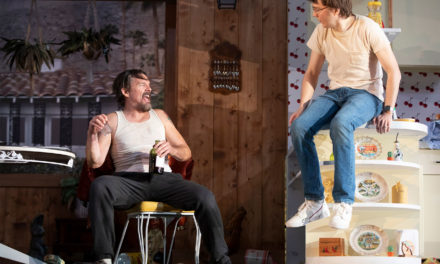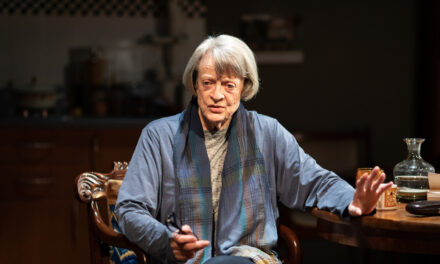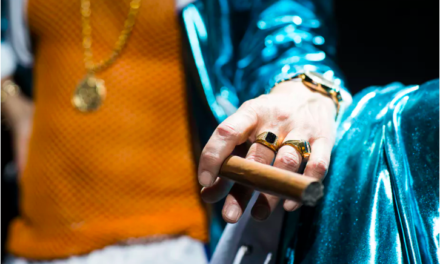The Ambigú is a tiny space in the Pavón Kamikaze theatre in Madrid; a large hallway bar that often serves as a black box performance space with three rows of chairs to host barely fifty spectators at a time in an intimate setting. In 2016, Kamikaze Producciones reopened the Pavón theatre–which had been closed for a year after hosting the National Company of Classical Theatre for over a decade—with the intention of revitalizing the Madrid theatre scene. They use the main stage to present larger format plays, while the different spaces of the theatre are utilized for workshops and educational programs. They produce their own works, as well as new plays by living authors, and they provide a space for the work of small companies which can rarely access mainstream theatres. These multifaceted and careful labor has earned the Kamikaze team the 2017 National Award for Theatre.
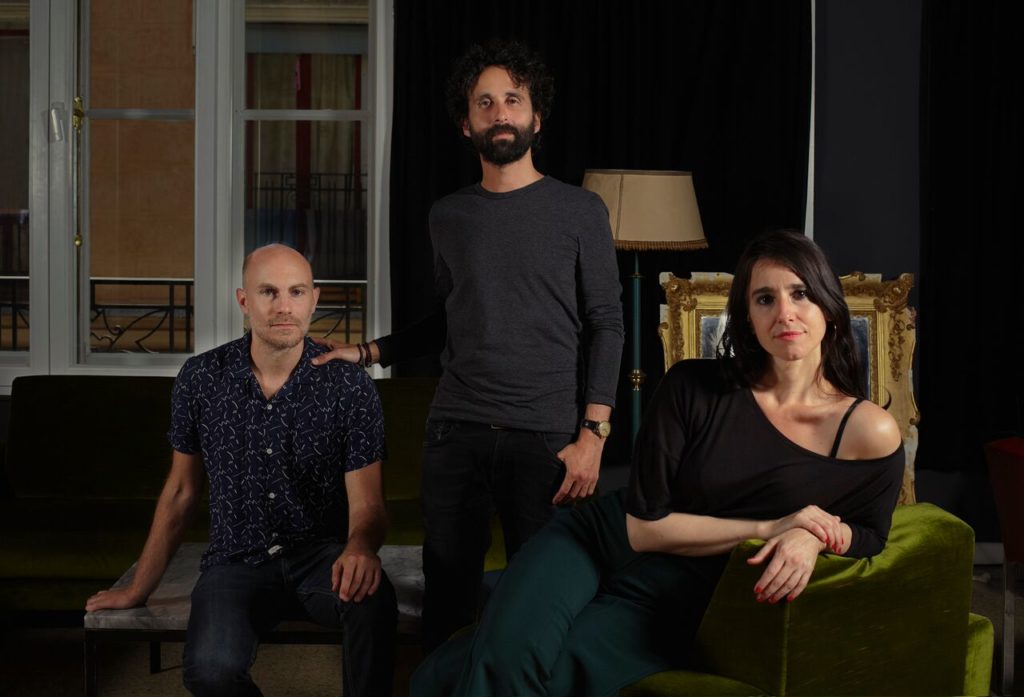
Emilio Tomé, Pablo Remón, and Fernanda Orazi. Photo by Vanessa Rabade. Courtesy of Pavón Kamikaze.
In June 2017, the Pavón Kamikaze co-produced Pablo Remón’s play Barbados Etcétera, which was recently programmed for another week in November 2017. Barbados is the fourth play written by Remón and the third produced with his company La Abducción (The Abduction) after La Abducción De Luis Guzmán (2013) and 40 Años De Paz (2015). In all their works, Remón’s company use small format, the same group of actors, and a minimalist approach based on words and acting. Pablo Remón comes from the film industry, and even though his work as a playwright and theatre director is fairly recent, it has been immediately recognized with the 2014 Lope de Vega Award for Muladar, co-written with his brother Daniel; a Max Award nomination for best novel playwright for his 40 Años De Paz; and more recently the 2017 SGAE Theatre Award for El Milagro Español, written in collaboration with Roberto Martín Maiztegui.
In Barbados Etcétera, two actors perform for 65 minutes in close proximity to the audience. On an empty black stage with the word Barbados in fluorescent blue letters in the back wall and two individual black benches as only props, the characters construct imaginative fictional worlds in the audience’s minds with just their words. A man and a woman dressed in formal party wear, the characters barely engage in action or conversation with each other, but rather function as co-narrators, weaving stories in a game that they are used to playing, constantly changing the rules. When narrating, they interrupt each other to add something to the story (“She was wearing a black dress, like this one”), ask for more detail in the descriptions (“What color was the wall?”), or correct the course of the narrative (“No, it wasn’t the Lancia car”). They reconstruct their memories and dream possible futures speaking of “a typical couple” that is probably no other than themselves, in an exercise of self-fictionalization that foreshadows their deeper secrets and rooted problems. The relationship between the characters is nuanced and multilayered, complicated by the multiple levels of fictionalization that blur fantasy and reality. At times the characters seem to be fictionalized versions of themselves, at other times they seem to be the actors fictionalized, rather than characters, like when the man addresses the woman directly in the last section, calling her by the real name of the actress, Fernanda.
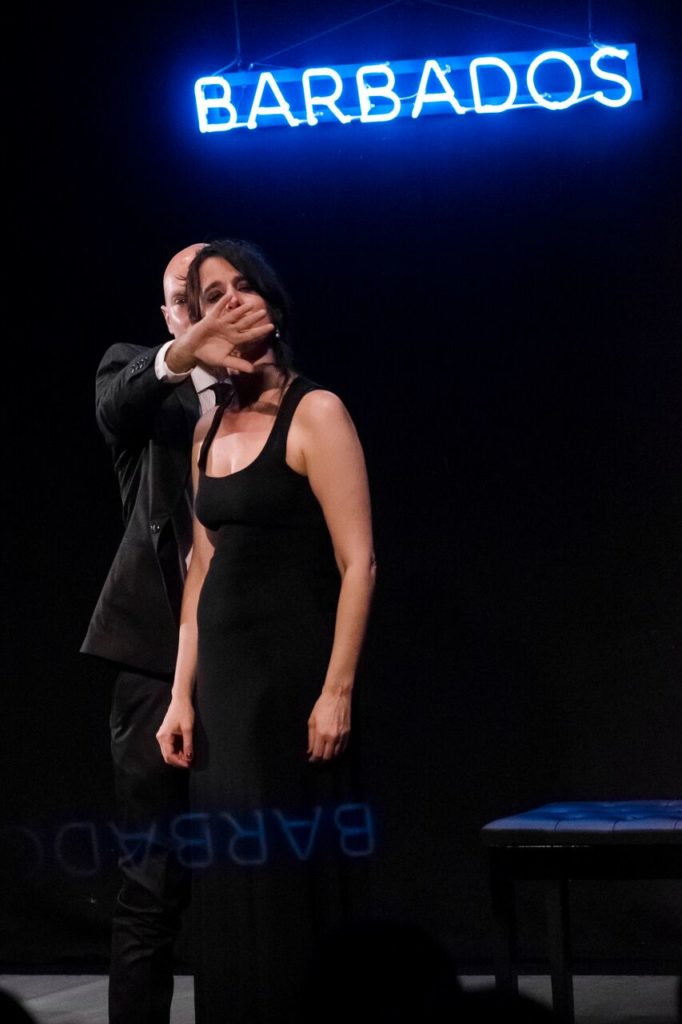
Emilio Tomé and Fernanda Orazi in Barbados Etcétera. Photo by Vicente A. Jiménez. Courtesy of Pavón Kamikaze.
The text is divided into three sections that flow naturally together but could stand on their own, following the musical concept of theme and variations. In the first section, the two actors discuss, invent, and enact the platonic relationship between a married woman and an upholsterer, who appears at her door years after upholstering her couch to confess his love. The second section is centered on the woman’s sexual awakening on the night in which she defined her masculine ideal, represented by the lead singer of the band Europe, and her subsequent sexual fantasies with her idol in a post-apocalyptical world. Finally, the third section becomes the struggle of a couple to continue together by remembering the moments in their past in which they were close to breaking up. Although this segment is more bitter and sad, in comparison to the hilarity of the previous sections, it has an effect of universalizing the story of this couple as the story of any couple after many years of being together. What could life have been if she had left him all those years back? What can be done of the emptiness of the everyday? Is love ever worth it in the long run?
Barbados Etcétera feels like an exercise of virtuosity. On the part of the text, that is witty and fast, and continuously keeps the viewer engaged in understanding the games of imagination it proposes. But even more on the part of the actors, who have nothing but their bodies and the text to face the audience in close proximity. Both Emilio Tomé and Fernanda Orazi give wonderful performances and have great complicity on stage, despite barely looking at each other or touching. Orazi is especially magnetic, with her ever-changing facial expressions, and the thousand different ways in which she looks at each audience member, with a subtle difference in gestures that fully transform her intentions. She cries at will and establishes an intimate yet distant relationship with the viewers. La_Abducción’s minimalist theatre made of words and powerful presence is an experience of pure, joyful theatre that proves, once again, that nothing else is needed than two actors and an audience in the same place and time.
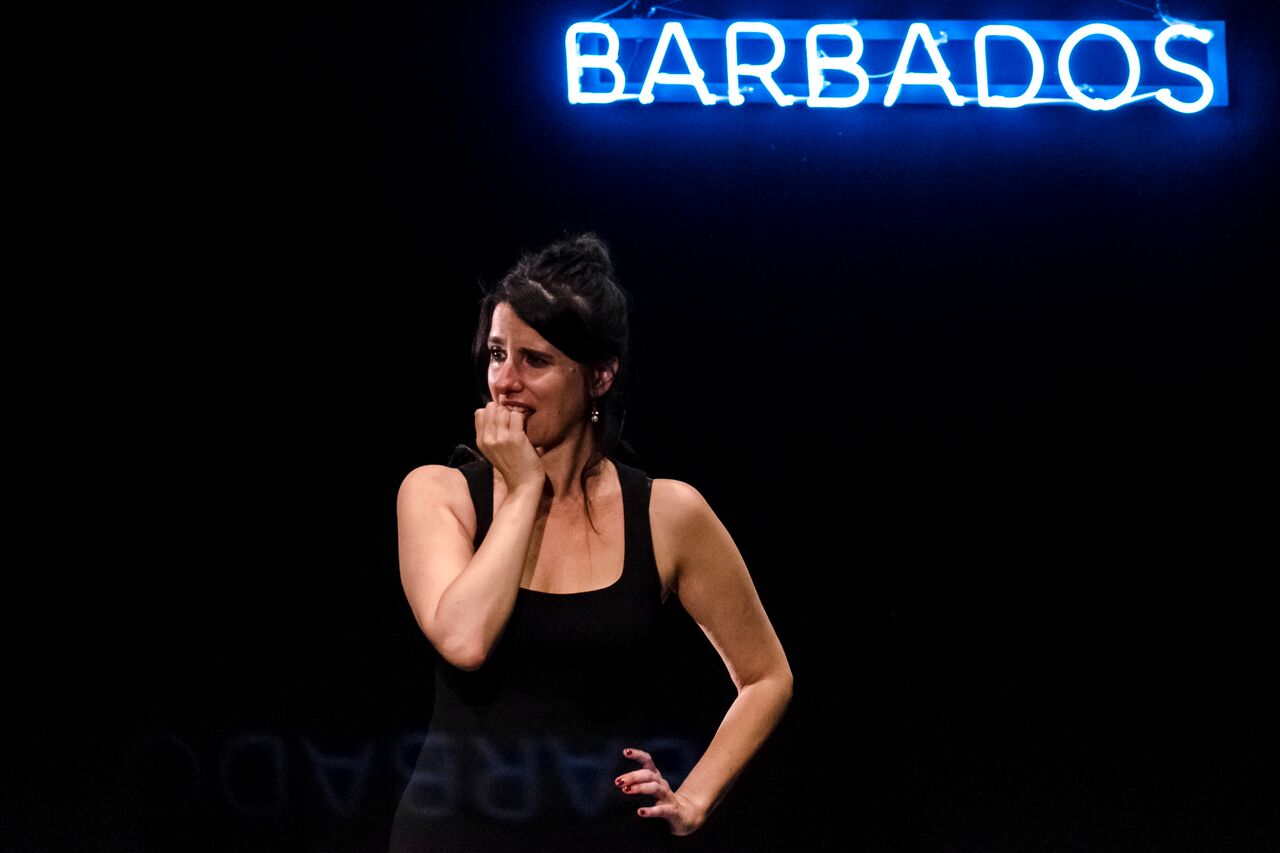
Fernanda Orazi in Barbados etcétera. Photo by Vicente A. Jiménez. Courtesy of Pavón Kamikaze.
Author and Director: Pablo Remón
Actors: Fernanda Orazi and Emilio Tomé
Assistant Director: Raquel Alarcón
Light and Sound Design: David Benito and Óscar G. Villegas
Producers: Silvia Herreros de Tejada and Pablo Ramos Escola
Stage and Costume Design: La_Abducción
This post was written by the author in their personal capacity.The opinions expressed in this article are the author’s own and do not reflect the view of The Theatre Times, their staff or collaborators.
This post was written by Mara Valderrama.
The views expressed here belong to the author and do not necessarily reflect our views and opinions.


